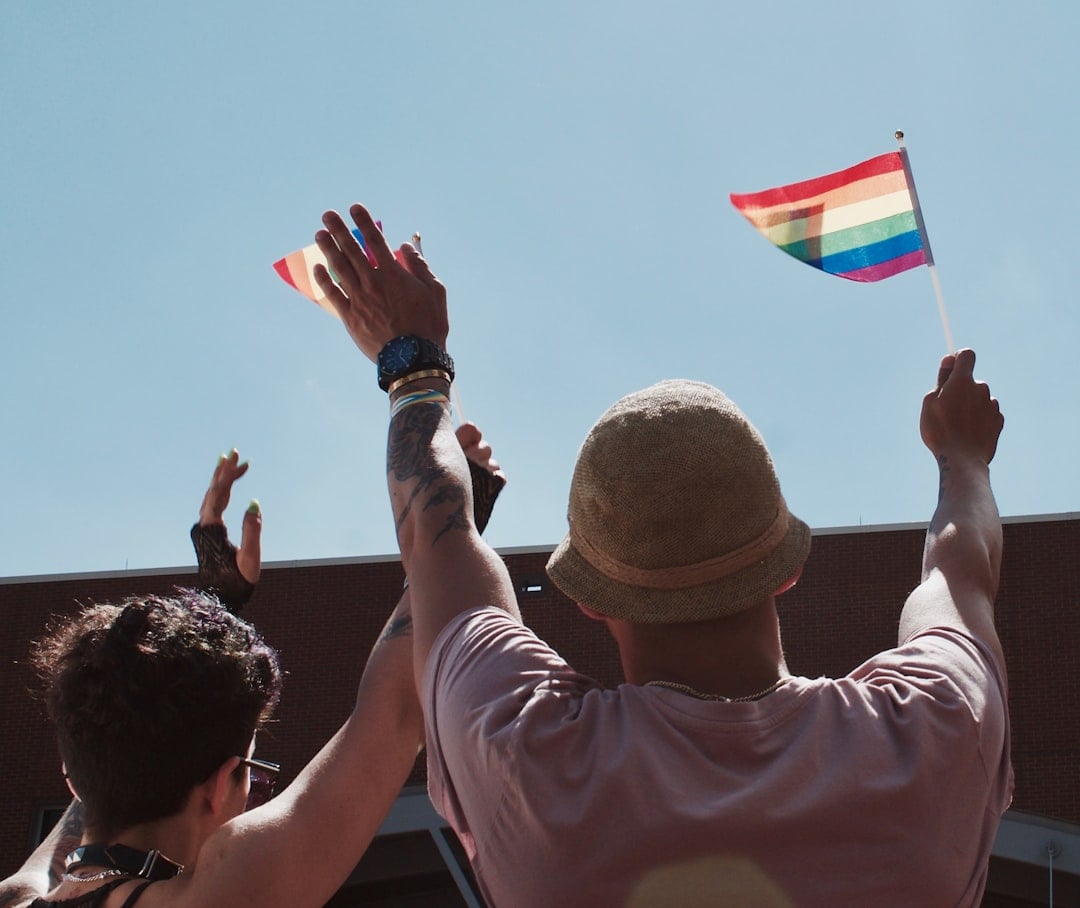(UNITED STATES) The United States has tightened access to protection for LGBTQ asylum seekers, with new rules and administrative practices making it harder to claim safety, reunite with partners, or even have gender identity recognized in immigration records. In June 2025, U.S. Citizenship and Immigration Services reaffirmed that only marriages legally recognized in the country where they took place will be honored for immigration benefits, a standard that blocks couples from countries where same-sex marriage is illegal or criminalized. Advocates and legal experts say the shift has compounded a broader rollback of safeguards, leaving people at risk of violence, detention, and, in some cases, death.
The immediate impact is most visible in cases where marriage recognition determines whether families can stay together. Under the USCIS policy, same-sex couples must show an official marriage certificate from a country that often refuses to issue one—and, in some places, criminalizes the act of seeking one. That has forced people to either risk exposure by asking hostile authorities for proof of marriage or abandon the hope of family reunification through immigration law.

“By narrowing who counts as married or whose gender ‘exists’ on paper, the White House has effectively barred countless queer individuals from asylum protections. Bureaucracy has become a new border wall, keeping the most vulnerable people out,” according to a TIME investigation.
This marriage recognition rule is part of a wider pattern that advocacy groups describe as both technical and deeply personal. Rules about who qualifies as a spouse intersect with how the U.S. government records sex and gender on official documents and how immigration adjudicators weigh the credibility of identity claims. For many LGBTQ asylum seekers, these choices are not paperwork preferences but survival decisions. To comply with the letter of the rule, some would need to produce documents that could get them jailed in their home countries. USCIS’s stance has been criticized as unworkable for queer couples escaping criminal penalties for same-sex relationships. The agency’s policy manual remains the reference point for officers who decide whether a marriage is valid for immigration benefits; the agency’s guidance on marriage validity and recognition is publicly available through the USCIS Policy Manual.
Advocates point to a cascade of changes, including the removal of recognition for transgender and nonbinary identities from federal documents during the Trump administration and a Supreme Court decision that allowed the administration to require U.S. passports to list only sex assigned at birth. With that green light, the State Department may refuse passports that reflect a person’s self-identified gender. For transgender and nonbinary people navigating asylum, this raises a dilemma: accept identity documents that misstate who they are or risk accusations of “inconsistency” that can sink a case. These administrative shifts are not abstract; they are the files people carry into interviews, the names and markers immigration officers see in their systems, and the basis on which officers judge credibility.
In immigration courts, judges can now deny asylum claims without granting a hearing, a major procedural change that cuts off the chance to explain personal histories, clarify inconsistencies, or present expert testimony. LGBTQ applicants are especially vulnerable when forced to prove sexual orientation or gender identity in environments where disclosure can be dangerous and evidence is often informal or private. Adjudicators frequently demand “proof” that is hard or impossible to gather, especially for people who have concealed their relationships for safety in countries where visibility can be a death sentence. Legal groups say the combined effect is fewer opportunities to present life-and-death claims and more rejections based on the absence of evidence that cannot reasonably be produced.
The human cost shows up in stories that have become painful touchstones for community groups. A lesbian couple who fled Afghanistan now faces return to Taliban rule because of tightened U.S. policies. A transgender woman was murdered while waiting for a U.S. resettlement interview. A stateless transgender woman in Saudi Arabia remains in hiding after being denied U.S. resettlement and is stranded in grave danger. A Russian LGBTQ asylum seeker was denied a hearing and then violently abused by staff inside U.S. immigration detention. These cases illustrate what advocates say has become a predictable pattern: people with credible fears of persecution are left stranded, silenced, or sent back into harm.
In a statement that reflected growing anger among resettlement organizations, Steve Roth, executive director of the Organization for Refuge, Asylum & Migration (ORAM), said:
“LGBTQI+ refugees are being abandoned to violence, detention, even death—simply for being who they are. This isn’t just a policy failure. It’s a moral collapse. And it must stop now.”
Human rights groups argue that the new barriers, taken together, function like an invisible wall—discretionary decisions by officers, narrow readings of statutes, and identity rules that do not match lived reality. In practice, they say, these hurdles have the same effect as explicit bans.
Numbers tell part of the story. Under the Obama and Biden administrations, the U.S. admitted tens of thousands of refugees each year, including LGBTQ people. That total has fallen to just 7,500, according to advocates, a fraction of previous admissions and skewed toward white applicants from South Africa. A 2021 report by the Williams Institute found that 11,400 LGBTQ people filed for asylum between 2012 and 2017, and over half came from Central America, where same-sex marriage is illegal in many places and anti-LGBTQ violence is widespread. Taken together, these figures suggest that cuts in refugee admissions and stricter adjudication at the border fall hardest on people from regions with hostile laws and high rates of abuse.
Conditions at the U.S.-Mexico border and inside detention centers deepen those risks. Many LGBTQ asylum seekers face violence and lack of shelter on arrival, and some feel forced to hide their identities even in U.S. facilities. Emem Maurus, legal director of the Border Butterflies Project, described a case in which a transgender asylum seeker from Venezuela stayed in detention rather than risk living with family in the U.S. because of transphobia.
“We have a lot of LGBT folks who are going straight back into the closet to go and stay with family members,” Maurus said.
For LGBTQ people, detention based on sex assigned at birth can mean placement in facilities that do not match their gender identity, heightening the risk of harassment and assault.
Advocates stress that policy shifts about “documents” often translate to real-world dangers. When gender identity options are removed from federal forms, and passports must list sex assigned at birth, trans and nonbinary asylum seekers must present identity documents that contradict their lived identity. Officers then flag “inconsistencies” during credible-fear interviews or asylum processing. When marriage recognition hinges on local legality, queer couples from countries with criminal penalties for same-sex relationships face an impossible demand: produce an official certificate that could expose them to prosecution, or accept permanent separation. As one advocate described, requirements that seem technical are impossible in practice for LGBTQ asylum seekers.
Some changes followed a zigzag pattern in recent years. The Biden administration briefly restored recognition of informal marriages for refugee and asylee cases, giving some couples a path to reunification without exposing themselves to hostile governments. But advocates say that broader rollbacks—anti-trans executive orders and the removal of gender identity options from federal forms—still apply across many immigration categories. Bridget Crawford, director of law and policy at Immigration Equality, warned:
“The Trump administration’s attempts to illegally dismantle the refugee and asylum systems are costing countless LGBTQ lives. If they do not act right now, more LGBTQ people will be killed.”
The warning reflects a sense among legal aid groups that late-stage corrections have not matched the pace or scope of earlier restrictions.
Human Rights First, ORAM, and other organizations continue to document escalating risks.
“These aren’t just bad policies, they are a death sentence for LGBTQI+ people fleeing violence and persecution, who are now left facing escalating risks without the lifesaving protections of U.S. resettlement and asylum,” said Eleanor Acer, senior director for global humanitarian protection at Human Rights First.
Their reports describe how immigration judges have used expanded power to deny claims without hearings and how evidence standards penalize people who have had to remain hidden to survive. The result, they argue, is a system that demands visibility from those who can least afford it and then punishes them for either speaking up or staying safe.
Community groups have tried to fill the gaps. Programs such as Welcome Corps, working with organizations like Rainbow Railroad, create sponsorship paths and temporary lifelines for some LGBTQ refugees. But these efforts reach only a small share of those at risk, and they cannot substitute for systemic access to asylum or family reunification. Caseworkers say they face a daily triage: finding safe housing, connecting people to medical care, and helping them navigate shifting rules that can change between one appointment and the next. For LGBTQ asylum seekers who arrive without documents that match their gender identity or without marriage certificates that their countries refuse to issue, these local supports cannot overcome federal barriers.
The legal landscape remains hard for applicants to read. As of November 2025, the government has not reversed some of the most restrictive policies from the Trump era, and the Supreme Court has allowed key measures affecting LGBTQ people to stand. Immigration lawyers report that judges and officers now screen claims more aggressively, often demanding corroboration that is either unsafe or impossible to obtain. LGBTQ asylum seekers who cannot disclose relationships in their home countries struggle to produce proof that satisfies adjudicators. Those who have been forced to conceal their identity for years may have few documents or witnesses willing to testify, especially when relatives still live under threat.
Across these developments, three threads tie the policy changes together: marriage recognition that excludes couples from hostile jurisdictions, identity documents that erase or contradict gender identity, and procedures that curtail the chance to tell one’s story. Each thread tightens the same net. The first keeps partners apart, the second undermines credibility, and the third closes the door before anyone can explain why the first two are impossible hurdles. For many LGBTQ asylum seekers, that sequence ends in detention or deportation.
Advocates say solutions exist but require deliberate choices. Restoring recognition of informal marriages for refugees and asylees would open a path for couples who cannot safely obtain certificates. Reinstating gender identity options on federal documents would align records with lived identities and reduce “inconsistency” flags during screenings. Ensuring hearings for asylum claims would restore the basic ability to tell a story and respond to doubts. For now, those remain calls from outside government. The people most affected are still making impossible choices: whether to hand over documents that incriminate them abroad, whether to present identity papers that misstate who they are, and whether to risk speaking openly in systems that sometimes punish disclosure.
The cumulative effect, human rights groups say, is that the U.S. has “turned its back” on LGBTQ asylum seekers. Cuts in refugee admissions have intersected with a USCIS policy on marriage recognition that many couples cannot meet, and identity rules that put transgender and nonbinary people in bind after bind. The cases of the Afghan couple, the murdered woman who never made her interview, the stateless woman in hiding in Saudi Arabia, and the Russian applicant abused in detention show what is at stake when policy closes doors. Until the rules change, the outcomes are likely to remain the same: more families separated, more people forced into hiding, and more claims denied before they are heard.
This Article in a Nutshell
Since June 2025, USCIS policy requiring that only marriages legally recognized where celebrated qualify for immigration benefits has blocked many same-sex couples from reunification. Combined with removal of gender-identity recognition on federal documents, stricter credibility standards, and judges denying asylum without hearings, the shifts raise risks of detention, deportation, and violence for LGBTQ asylum seekers. Advocates urge restoring informal marriage recognition, reinstating gender-identity options on documents, and ensuring hearings to protect vulnerable applicants.













